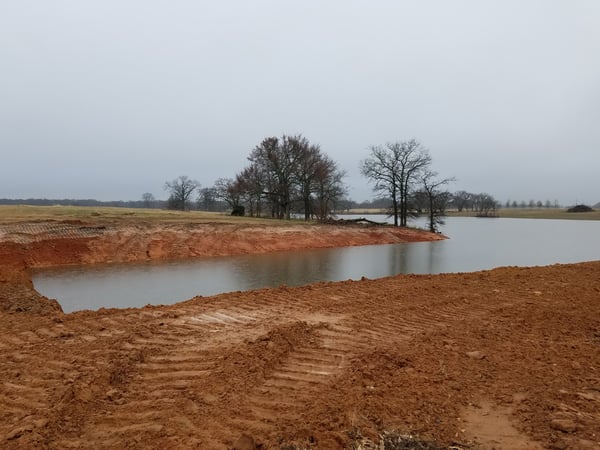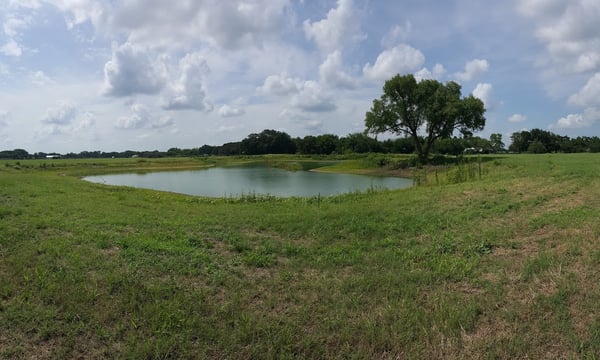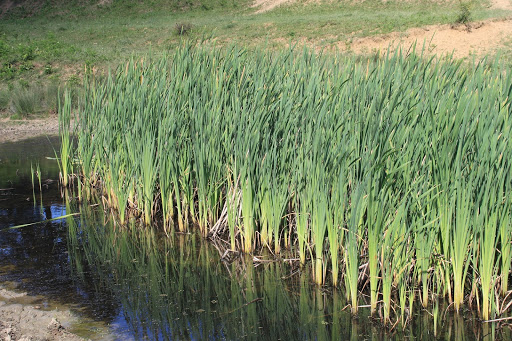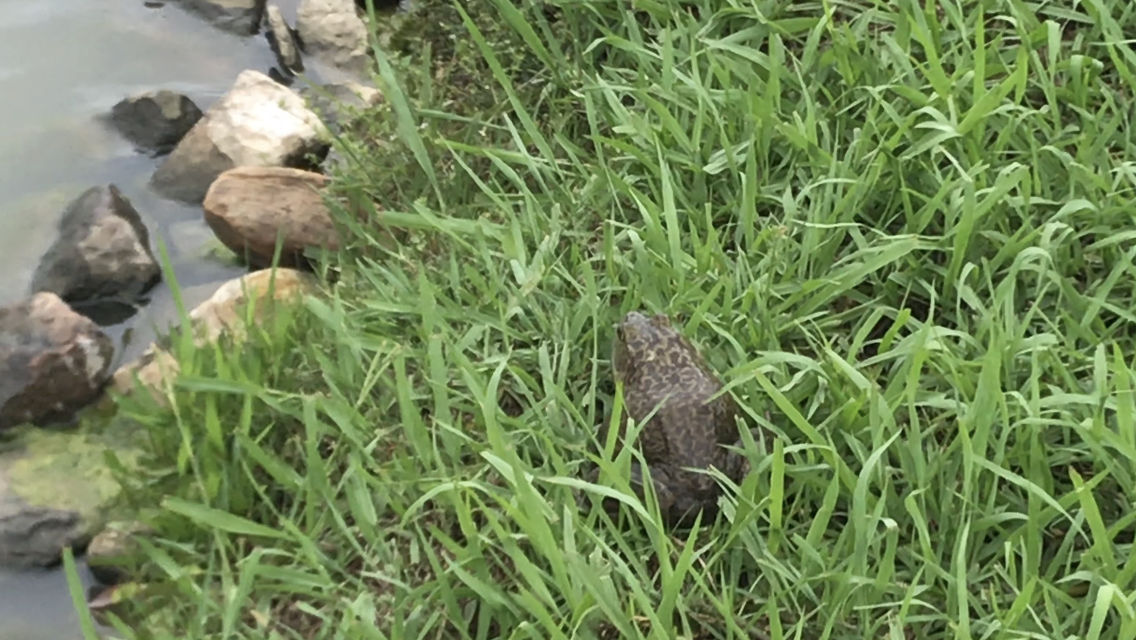Controlling and maintaining the vegetation that is in place around the edges of your pond, both in and out of the water, is a crucial aspect of keeping your pond from filling with sediments or becoming turbid.
Vegetation Around Your Pond Lessens Turbidity
Repairs to your pond or even the construction of a pond or a homesite can cause vast expanses of grass and vegetation to be ripped up and left bare. It is vital that these areas are restored as soon as the dirt work is completed. Controlling and maintaining the vegetation that is in place around the edges of your pond, both in and out of the water, is a crucial aspect of keeping your pond from filling with sediments or becoming turbid.

Topography Affects Vegetation Selection
The theory of how to control vegetation on flat ground is simple; prep the soil, plant the seeds, irrigate or wait for a rain event, and there you go; you have restored the vegetation. When we are talking about ponds, however, there are a few more steps involved. A properly constructed pond has an adequately sized watershed associated with it. A watershed is, at its most basic form, a portion of the land in which the topography slopes to collect runoff rainwater into a creek, stream, river, or any other drainage. The severity of this sloping topography is what causes the majority of problems. At any one of the steps necessary to re-establishing vegetation, there can be a large rain event and completely wash away all progress you have made. Sometimes you get lucky, and the slope is very gentle or there is enough ground moisture to germinate the seeds and start the process before a big rain. Then again, the slope might be very severe and you can’t get your seeds to stay where you put them.

Choose the Right Vegetation
When it comes to re-establishment efforts here in Texas, as with most of the southern US, the vegetation of choice is Bermuda Grass. There are a lot of subspecies of Bermuda that have been selectively cross-pollinated to withstand drought, colder climates, less sun, etc. so find one that best fits your requirements. Bermuda grass is primarily used for this practice because of its fast-growing nature, ability to be inundated for extended periods, and its ability to handle full sun exposure on those 100-degree days. The rhizomes of this species extend out and help tie the soil structure together, keeping it from washing away. Bermuda grass is a perennial warm-season grass, meaning the same mother plant comes back year after year and that it does better after the temperatures are steadily over 60-degrees. It can take some time to get this grass established, but once it is established it is a very hearty species. Because of its slow starting nature, it is highly recommended to overseed with cool-season annual ryegrass. The reason for choosing an annual species is because it completes its entire lifecycle within one season. This relatively short-lived life cycle causes the plant to germinate at cooler soil temperatures and quickly establish a root system that will help to hold the soil together until the Bermuda grass can be established. In more northern climates, I would repeat this same process, but with a species of grass that is more suited to your climate, such as perennial fescue or ryegrass.
Control Water Flow While Establishing Vegetation
Overseeding is something I would recommend no matter the re-establishment event. With increasing slopes, however, there need to be additional steps taken to ensure the seeds stay where they are planted. This is where laying down erosion mats, woven jute blankets, or covering the exposed soil in mulch or scattered hay comes into play. All of these “tools” work to slow the movement of water down the slope, which in turn reduces the amount of soil it picks up on its way downhill. This works excellent when trying to establish vegetation on pond dams or areas of moderate slopes. Once you get into extreme sloping areas, this is where you need to start weighing the costs of reforming the terrain, breaking out the heavy machinery and getting to work, or placing larger rocks and boulders that will stay put and not be washed away.
 Establishing vegetation around your pond to help control the effects of erosion doesn’t stop at the water's edge. Having established aquatic plants can help to slow down the incoming water and allow sediments to settle out of suspension before reaching the main body of water. This can be accomplished by having growths of Cattails or American Waterwillow planted at the mouths of feeder creeks and streams. Going one step further, having a managed section of sedges and rushes along the banks of your pond, especially on windblown banks, can help to reduce the effects of wave actions eating away at the pond edge. This same benefit can also be accomplished with submerged vegetation that helps to slow down the movement of the water reducing the size of the waves produced.
Establishing vegetation around your pond to help control the effects of erosion doesn’t stop at the water's edge. Having established aquatic plants can help to slow down the incoming water and allow sediments to settle out of suspension before reaching the main body of water. This can be accomplished by having growths of Cattails or American Waterwillow planted at the mouths of feeder creeks and streams. Going one step further, having a managed section of sedges and rushes along the banks of your pond, especially on windblown banks, can help to reduce the effects of wave actions eating away at the pond edge. This same benefit can also be accomplished with submerged vegetation that helps to slow down the movement of the water reducing the size of the waves produced.
The best way to keep a clear healthy pond is to take care of the vegetation that grows in and around it. If you have any other questions on establishing vegetation around your pond, or about pond and lake management in Texas, feel free to contact me anytime at garrett@pondking.com.
See y’all down at the pond.



